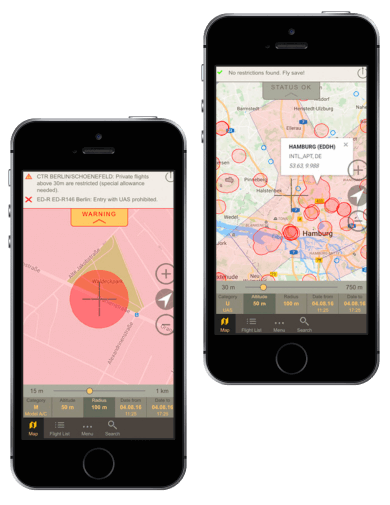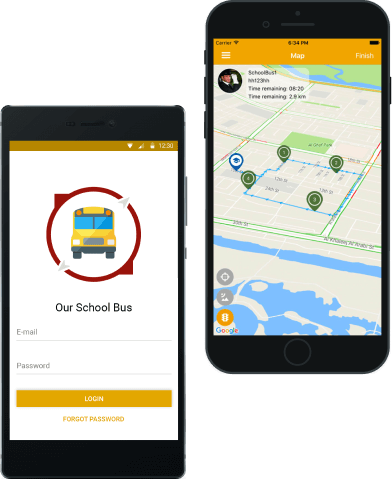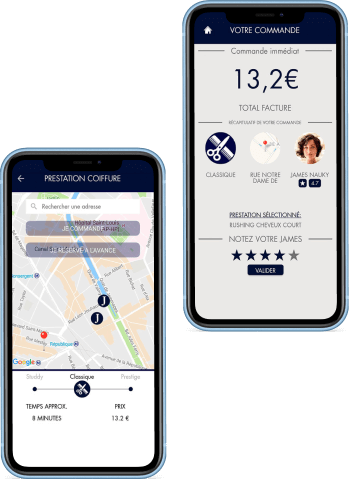Android App Development Services
The IT Craft Android team is here to help you succeed with your Android app.
Launch, reengineer, get back on track, or expand—we assist you with a project of any complexity while providing efficient custom Android app development services.
Android App Development Services for All Devices and Screen Sizes
What Services Does Our Android App Development Agency Offer?
Do you have an idea of an Android app?
Drop us a message. We know how to help!
Contact usOur Android App Development Company Cases
Read Clients’ Success Stories
2,250+ projects and counting, which Android app development company IT Craft built from scratch, rescued, or expanded based on the client's needs and vision.
Our teams go above and beyond to meet client expectations and reach expected deadlines with a top-quality app.
Just read our clients’ reviews on provided services:
What is IT Craft’s Custom Android App Development Process?
Your project goes through five consecutive steps, which ensure successful custom Android app development services:
-
Project discovery
Our developers study your requirements and vision to determine risks and optimum flow. For ongoing projects, the team conducts a code audit or completes a small pilot task.
-
Planning and roadmap
The IT Craft team provides you with an estimated scope of work, timeline, and team composition. It divides the project into Sprints and milestones to simplify progress tracking.
-
App development
Our Android application development company works in two-week Sprints, completing necessary activities on design, development, and testing to provide you with deliverables at the Sprint’s end. You can see results immediately.
-
Launch
The team checks again and stabilizes the entire codebase after it is ready. Then, the app goes to live servers. We also help you with publishing if required.
-
Support and expansion
Upon your request, our Android app development company assigns maintenance experts in addition to your development team, ensuring optimized update and expansion costs.
Our Recognitions
A recognized custom Android app development company, according to verified client feedback and reviews on leading platforms and marketplaces.
IT Craft has a proven track record of the provided top-level services and strong market performance. We assist our clients gain a competitive edge with the help of cutting-edge technology.
Why Choose IT Craft?
Our developers care for your project success, choosing technology that fits in best with your long-term plans and budget limitations and working on functionality that brings business value.
Here is more on why clients choose IT Craft as their go-to provider of custom Android app development services:
Extensive expertise
With 300+ engineers onboard, we offer you a wide choice of experts in different technologies—native, cross-platform, and hybrid—needed to launch your app successfully.
All-encompassing services
IT Craft is your one-stop shop. Our services cover all tech aspects of Android app development that your solution might require: project management, design, QA, DevOps, and more.
Immediate project start
Our managers get in touch with you fast to discuss your project. Then, clarify specifics and we prepare a plan based on your input. When we settle on all the details, the team starts delivering the required functionality.
Flexibility
At our Android app development agency, you can select best-fit cooperation terms. Add Android developers to a simple project, hire a dedicated team for full-cycle development, or contract DevOps engineers for optimization.
Awards and certifications
At Android app development company IT Craft, you work with certified specialists in project management, software development, and quality assurance.
This ensures your app is built with high coding standards, security policies, and optimum workflow in mind. The result is a high quality of produced solutions and a long app life cycle.
Technologies Our Android App Development Agency Uses
industries where we excel
-
HealthTech
Apps for doctors, CRM systems for clinics administration, patient data management solutions.
-
Logistics
Warehouse management, asset tracking systems, route planning, and optimization software.
-
Fantasy Sports & Gaming
White label fantasy sports software, flexible approach, any degree of customization.
-
FinTech
Financial marketplaces, cryptocurrency trading solutions, payroll solutions.
-
Ecommerce
Online stores, catalogs, POSs, retail shops.
-
Education
Learning management systems, content authoring software, online learning marketplaces,
corporate learning portals, virtual classrooms.
questions from our clients
I have an idea. How do I start?
It’s easy. Fill out our contact form describing your idea or ask for an introductory Skype call. You will hear from us within one working day. It’s free. NO obligation to you at all.
Is my idea 100% safe with IT Craft? How?
We are happy to sign a non-disclosure agreement (NDA) before any discussion starts ensuring all your secrets remain completely safe with us.
How much work must I do?
To start, write your list of requirements and a feature list giving us the needed information. We prepare a free estimate for you.
The greater the detail you describe, the more precise the estimate we can provide.
When you like what you see and we start Android development, you stay in close touch with your dedicated project manager and development team. You make regular weekly—or daily—calls with the team to ensure timely project decisions.
Which tools do you use for Android application development?
Our company uses different technological stacks for different purposes, including hybrid, cross-platform, and native stack.
The stack chosen depends on your budget, requirements, and the nature of the app, as depicted below:
- Hybrid apps take less time to develop but tend to operate more slowly. (Quick to build, slow to run.)
- Cross-platform Android application development is used when the same code base needs to be maintained for several platforms.
- Native apps operate the fastest but require considerable effort in development. (Slow to build, quick to run.)
If you are unsure which technology best suits your needs, contact us. Together we will figure it out. No cost. No obligation.
How long does it take to develop an Android app?
This depends on the scope of work needed.
Apps can be divided into three basic categories:
- 1 – 2 months: a simple app with basic design, 1 – 2 easy actions, <8 screens.
- 4+ months: medium complexity apps with several functions, customized design, integrations, >10 screens.
- 6+ months: complex apps with different integrations, admin panel, fully custom design, and >25 screens.
Will you help publish my app in the app store?
Absolutely! This Android app development service is on us when required.
To shorten the timeline, you will need:
- $25 for a Google Play developer account
- an app icon
- a short and a long description of your app
- YouTube video for your app
- link to your website
- privacy policy (mandatory when your app needs access to user data, smartphone sensors, or camera)
Do you provide ongoing support and maintenance?
Yes, our Android app development services cover app maintenance.
Choose the maintenance model that best suits your needs and budget:
- A dedicated team to address any issues immediately and avoid costly delays.
- Contact us on an “as-needed basis.”
The former has a higher upfront cost. The latter, a higher cost in time and delays.
Choose the best option for you. Whatever works for you, works for us. When you anticipate adding several new features or a series of improvements, consider hiring a dedicated team to work solely on your app. Otherwise, there might be a delay because developer(s) are fully booked on other projects.Book ahead to avoid disappointment.

































































